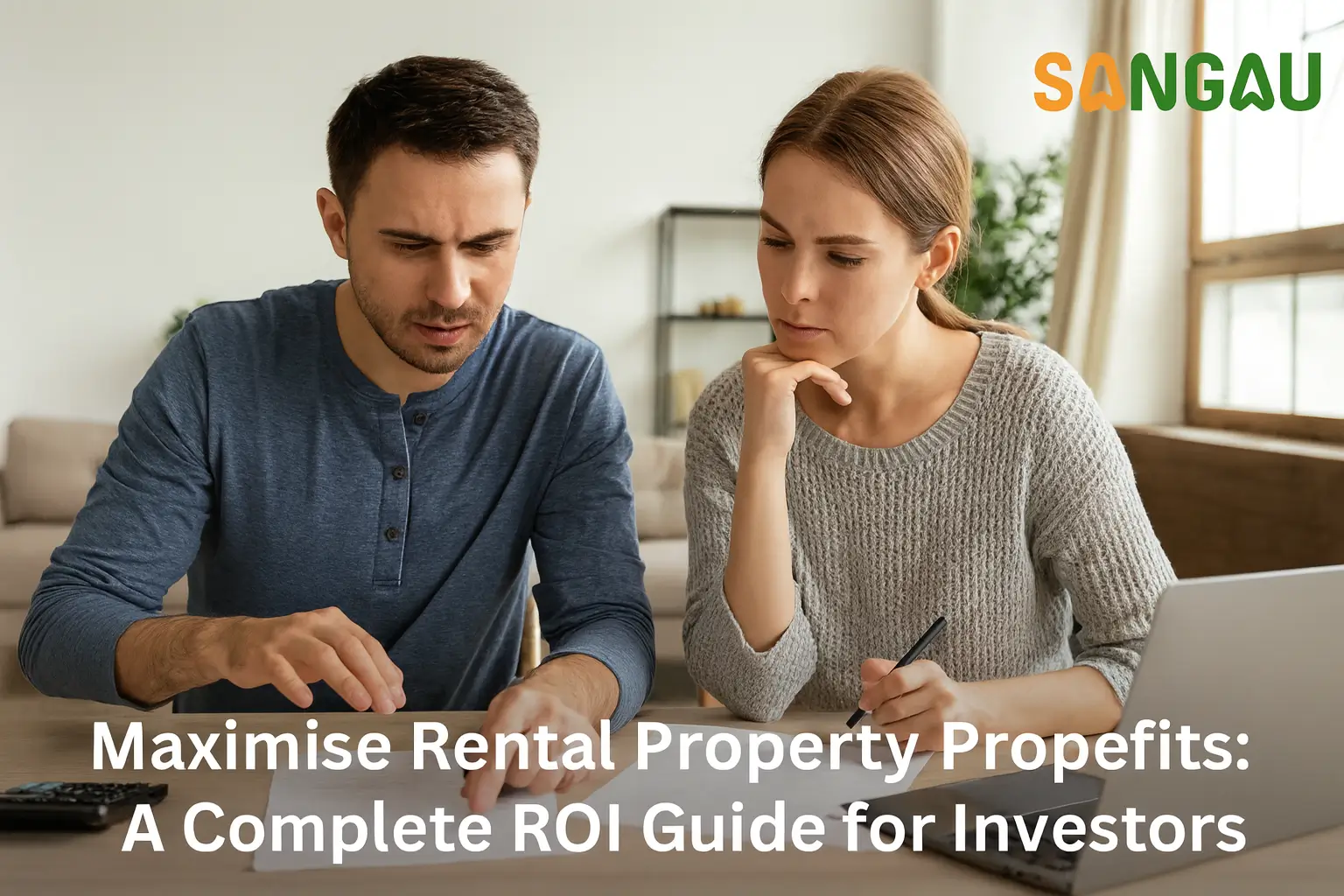Maximise Rental Property Profits - A Complete ROI Guide for Investors.
Published : 22 Sep 2025

If you're planning to invest in rental property or evaluating your current portfolio, understanding Return on Investment (ROI) is essential.ROI offers a clear view of your rental property’s financial performance and helps you make confident decisions—whether it's holding, upgrading, or exiting an investment.
At SANGAU, we know that ROI isn't just a number—it's a roadmap for investors who want to grow their wealth intelligently in the dynamic Bengaluru property market. This comprehensive guide walks you through the essentials of ROI calculation and the critical factors to consider to maximise profitability and minimise risk.
1. Understanding the True Meaning of ROI
Return on Investment (ROI) is a percentage that reflects how much profit you're making compared to your total investment. For rental properties, the formula is simple:
ROI = (Annual Net Profit / Total Investment) x 100
For example, if your net profit from rent is ?3,00,000 and your total investment is ?30,00,000, your ROI is 10%. This metric helps you compare properties and evaluate performance over time.
2. Start with Net Operating Income (NOI)
NOI is the income generated after subtracting operating expenses but before loan repayments and taxes. This includes:
- Property management fees
- Maintenance and repairs
- Insurance
- Utilities
- Vacancy loss
If your gross income is ?6,00,000 and expenses total ?2,00,000, your NOI is ?4,00,000. Tracking NOI regularly ensures a realistic picture of how your property is truly performing.
3. Factor in the Full Investment Cost
Many investors focus only on the purchase price, but true ROI requires including all upfront expenses:
- Stamp duty
- Registration charges
- Legal fees
- Furnishing and interiors
For example, a property bought for ?50,00,000 may actually cost ?60,00,000 when all costs are accounted for. Ignoring these will lead to inflated ROI figures and flawed investment decisions.
4. Account for Mortgage and EMI Payments
If your property is financed, the interest portion of your EMIs reduces your actual cash flow. Suppose you pay ?2,40,000 annually in interest; deduct this from your NOI to understand your true net income.
While loan principal increases your equity, interest is a recurring cost that must be acknowledged when calculating ROI.
5. Adjust for Vacancy Periods
Vacancies are a reality of rental investing. A one-month vacancy in a year means losing one-twelfth of your rental income. By building this into your ROI projection, you prepare for income fluctuations and maintain realistic financial expectations.
6. Understand Depreciation and Tax Impacts
In India, building depreciation can be used to reduce your taxable income. While it’s a non-cash expense, it positively impacts your after-tax ROI. Don’t forget to factor in:
- Tax on rental income
- Capital gains
- Deductible expenses
Being tax-efficient can significantly improve your investment returns.
7. Cash-on-Cash Return for Financed Properties
This ROI variant evaluates returns based only on your cash investment (not borrowed funds). If you invest ?10,00,000 of your own money and earn ?1,00,000 annually, your cash-on-cash return is 10%. This is a key metric for understanding short-term profitability, especially in leveraged deals.
8. Include Long-Term Appreciation and Equity Growth
Smart investors don’t just look at annual rent. Capital appreciation and equity from loan repayments drive long-term wealth. A property that appreciates from ?50,00,000 to ?70,00,000 over a decade, combined with loan repayment, adds significantly to your total ROI.
9. Compare ROI Across Property Types
Properties vary in performance. Central Bengaluru flats might offer low rental ROI but high capital gains. Suburban properties may give better rental yields but slower value growth. Comparing ROI across different property types helps fine-tune your portfolio for balanced returns.
10. Leverage Technology for Smarter ROI
Use property management platforms and ROI calculators to assess financial performance. These tools allow you to input variables—like renovations, rent hikes, or loan restructuring—and see real-time effects on ROI. This leads to smarter, data-driven investment decisions.
Bonus Tip: How SANGAU Can Help Maximise Your ROI
At SANGAU, we go beyond property management—we help investors achieve financial performance. Our services include:
- Monthly financial reports
- Detailed expense tracking
- Tenant retention strategies
- Vacancy management
- Proactive maintenance
We identify underperforming assets, suggest improvements, and ensure transparency at every step. Partner with us to get the most from your property investment in Bengaluru.
Call to Action
If you're serious about maximising returns from your rental property, start with the right data, strategy, and partner. Connect with SANGAU today for expert property management that delivers results. Let’s make your rental property work smarter for you!
#SANGAU #RentalROI #PropertyInvestmentIndia #RealEstateBengaluru #SmartPropertyManagement


